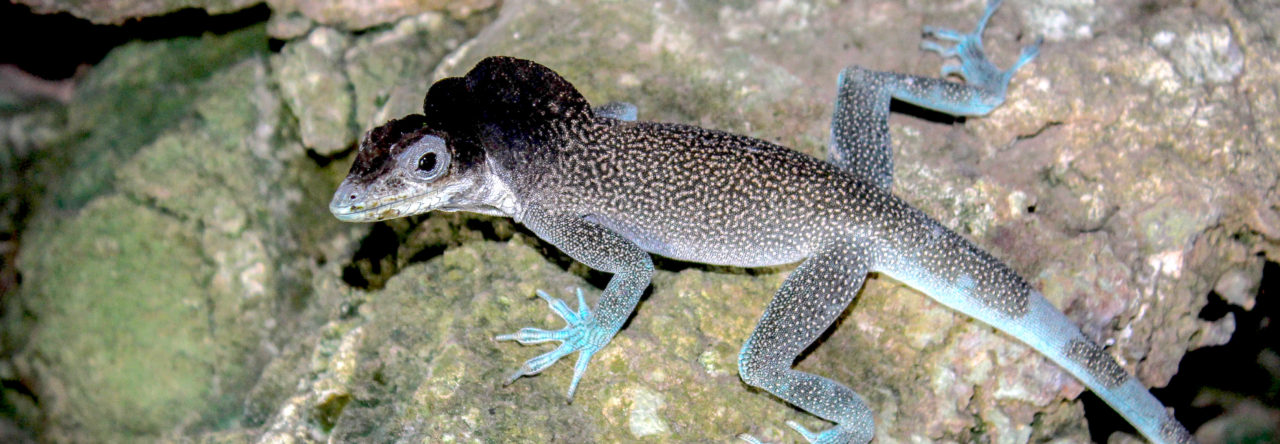AA‘s man in Wisconsin, Greg Mayer, filed this report:
In Ernest E. Williams’ 1969 classic on the ecology of colonization, he identified Anolis cristatellus as one of the ‘minor colonizers’– not as widespread as carolinensis and sagrei, but having close relatives on Mona, Desecheo, and the Turks and Caicos. This natural colonization has now been augmented by human introductions– including Florida, Costa Rica, and the Dominican Republic, so that it is moving up on the colonization hit parade. In many of these places (e.g. Miami, Limon, Costa Rica), they have become established in highly human modified habitats.
Another sort of invasion has been taking place within Puerto Rico, as Kristin Winchell of U. Mass., Boston, has reminded us– cristatellus is also occupying (and thriving in) urban habitats in the densely populated parts of Puerto Rico. In her talk, coauthored by Graham Reynolds, Sofia Prado-Irwin, Alberto Puente-Rolon and Liam Revell, she shows that urban habitats present many challenges to anoles. The typical urban habitat is full of man-made surfaces (wood, masonry, glass, metal, oftrn painted), there is little or no canopy, the ground is made up largely of impermeable surfaces (so water runs of quickly), all of which lead to urban habitats being hotter, drier, and quite distinctive compared to the natural forest and woodland habitats. And let’s not forget the cats–all those awful, lizard-eating cats! (Apologies to Jerry Coyne!)
Kristin and company supposed, naturally, that all these environmental differences could lead to fairly intense selection for local adaptation. In particular, they supposed that city lizards should have longer legs (because running on larger, flatter surfaces is done better with longer legs), and that they would have more toe lamellae (to deal with the slippery, texture-less artificial surfaces, where claws are less effective for grip).
They tested these predictions at 3 paired sites near San Juan, Ponce, and Mayaguez (the natural site in San Juan was labeled by a sign at the site as “Una esmeralda verde en un mar de cemento”!) They confirmed their environmental characterization of cities, and found, as expected, that lizards perched on wider surfaces, did have more lamellae, and had longer legs–a resounding success. Interestingly, they did not find a change in perch height distribution between urban and natural. My one query would be about the change in lamellae number. High lamellae number is associated with narrower perch diameters– the numerous lamellae allowing the toepad to curl round to conform to the curved shape of the narrower perch (as shown in trunk crown anoles having more lamellae than similar-sized trunk ground anoles). I’ll have to think about what exactly I would expect in a trunk ground lizard adapting to man-made surfaces.
Kristin mentioned that they are planning a common garden experiment to test whther the differences have a genetic basis, as opposed to representing phenotypic plasticity. So we can look forward to more interesting results from this project.
- Evolution in Real Time on Lizard Island - March 23, 2025
- Spider Snags Adult Anolis osa - March 22, 2025
- An Homage to the Green Anoles of New Orleans - March 21, 2025



Leave a Reply